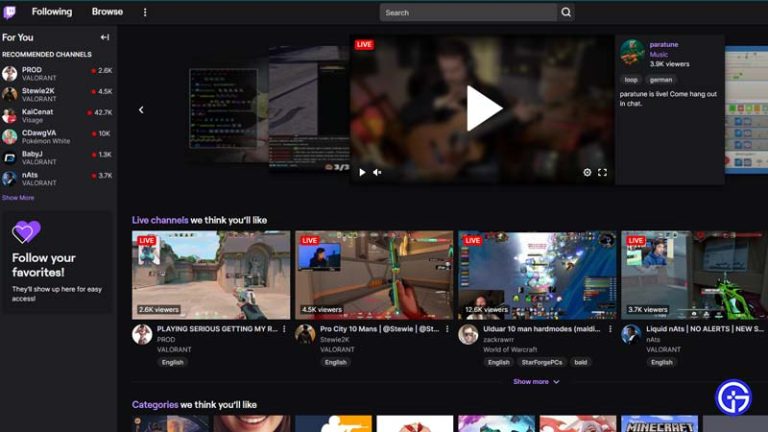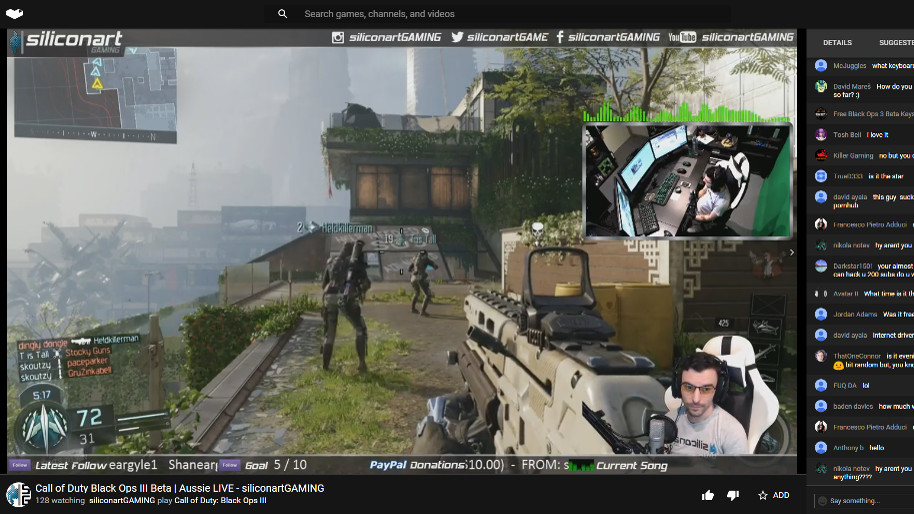When it comes to sharing your content online, Twitch and YouTube are two of the biggest players in the game. But which platform is better suited for your specific needs? This guide dives into the details, helping you understand the strengths and weaknesses of each platform. Whether you’re a gamer, a vlogger, or an educator, knowing the ins and outs of Twitch and YouTube can help you make an informed choice on where to invest your time and energy.
Understanding the Two Platforms

Both Twitch and YouTube have carved out their own unique niches in the realm of online content. Let’s explore what each platform has to offer:
Twitch
- Focus on Live Streaming: Twitch is predominantly known for its live streaming capabilities, making it the go-to platform for gamers, musicians, and anyone who wants to broadcast their activities in real time.
- Engagement: The platform offers unique chat features, allowing streamers to interact directly with their audience. This high level of interactivity can foster a strong community.
- Monetization Options: Twitch offers various ways to monetize, such as subscriptions, bits (a form of tipping), and ad revenue. However, you may need to meet specific criteria to unlock these features.
YouTube
- Video Variety: Unlike Twitch, YouTube supports both live and recorded content. This versatility allows for a wider range of video types, from tutorials and vlogs to gaming and educational videos.
- Searchability: The platform is optimized for search, which means your content has a greater chance of being discovered by new viewers through search keywords and recommendations.
- Monetization and Growth: YouTube’s Partner Program offers ads, memberships, and Super Chat features. Growing your channel on YouTube can lead to significant long-term earnings, but it usually requires consistent effort and quality content.
Understanding these core differences can help you decide which platform aligns best with your content creation goals.
Also Read This: How to Remove Adobe Stock Watermark: Free and Paid Methods
Target Audience and Community Engagement

When it comes to building a following on platforms like Twitch and YouTube, understanding your target audience is absolutely essential. Each platform attracts different demographics, and knowing who you're aiming to engage with can help you tailor your content effectively.
On Twitch, the audience is primarily made up of younger gamers and tech enthusiasts who love live interaction. This means your content should lean heavily on gaming streams, interactive Q&A sessions, and community-driven events. Since Twitch focuses on real-time engagement through chat, leveraging community interaction is crucial. Try incorporating polls or open discussions while streaming to make your audience feel involved.
In contrast, YouTube tends to attract a broader audience, with older viewers often seeking educational content, entertainment, or DIY tutorials. It allows for a more polished content creation approach, which could include in-depth video series or high-quality vlogs. Here, engaging with your audience can take place in comments or through video responses, teaching you what they love, or even what they want more of.
Consider these points to enhance your community engagement:
- Consistent Content Schedule: Keeping your audience expecting your content regularly builds loyalty.
- Interactive Content: Use polls, quizzes, or gaming tournaments to create an interactive experience.
- Engage in Comments: Responding to comments can help your audience feel valued and part of a community.
Ultimately, you want to create a *two-way conversation with your audience. Whether it's through live chats on Twitch or comments on YouTube, fostering a community where your audience feels heard will go a long way in building your presence on either platform.
Also Read This: How to Edit Your Project Name on Behance Tips for Updating Your Portfolio
Monetization Opportunities

Monetization is a key factor when choosing between Twitch and YouTube, as each platform offers unique opportunities to earn income based on your content and audience size.
On Twitch, monetization primarily comes from three sources:
- Subscriptions: Viewers can subscribe to your channel, providing you with monthly income, typically ranging from $4.99 to $24.99 for different tiers.
- Bits: This is Twitch’s form of virtual currency that viewers can buy and donate to you during streams. It's a direct way for fans to support you.
- Ad Revenue: Twitch pays you for ads shown during your streams, although this can vary widely based on your audience size.
Conversely, YouTube offers a different structure for monetization:
- YouTube Partner Program: Once you meet the eligibility criteria (1,000 subscribers and 4,000 watch hours in the past 12 months), you can earn a share of ad revenue from your videos.
- Channel Memberships: Similar to Twitch subscriptions, viewers can become members for exclusive perks, providing you with ongoing revenue.
- Super Chat and Super Stickers: During live streams, viewers can pay to have their messages highlighted.
- Sponsored Content: Collaborating with brands to feature their products in your videos can significantly boost your earnings.
In conclusion, both platforms offer viable avenues for monetization, but the approach differs. Twitch is primarily focused on live interactions and donations, while YouTube, with its vast reach, allows for various ad revenue models. Understanding these can help you select the best platform for your content strategy and financial goals.
Also Read This: Guide to Download Shutterstock Images for Free
Content Variety and Flexibility
When it comes to choosing the best platform for your content, the variety and flexibility offered by Twitch and YouTube play a crucial role. Both platforms cater to different types of content creators, and understanding these differences can help you make an informed decision.
Twitch primarily focuses on live streaming, making it the go-to platform for gamers and live content creators. However, it's not just limited to gaming! Here are some content categories you can explore on Twitch:
- Gaming (let's players, speedruns, eSports)
- Creative arts (drawing, music, cooking)
- Just Chatting (casual conversations, Q&As)
- Fitness and health (live workouts, wellness talks)
On the other hand, YouTube offers a vast range of content formats, from long-form videos to short clips. You can create everything from tutorials and vlogs to music videos and web series, making it a more versatile platform for diverse creators. Some benefits include:
- Video on demand (edit and upload at your pace)
- Live streaming capabilities (with features like chat interaction)
- Shorts for quick, bite-sized content
Ultimately, your choice depends on the kind of content you wish to produce. Do you want to interact live with your audience? Then Twitch might be your best bet. Alternatively, if you prefer curated, polished videos, YouTube could be the way to go. Either way, both platforms offer great opportunities for reaching wide audiences!
Also Read This: “How Are You Doing?” Images for Any Occasion
Technical Requirements and Ease of Use
Understanding the technical requirements and ease of use of both Twitch and YouTube can save you time and hassle as a content creator. You want a platform that fits your needs without unnecessary complications, right? Let’s break it down:
Twitch is generally considered to be more demanding technically. Here’s what you should keep in mind:
- Hardware: A good computer with a strong CPU and GPU is essential, especially for live streaming games. You might also need a gaming console if that's your primary content.
- Internet Connection: A stable and fast upload speed (at least 5 Mbps recommended) is crucial for uninterrupted live streaming.
- Streaming Software: Familiarize yourself with OBS or Streamlabs to manage your stream effectively.
Conversely, YouTube* is often seen as more user-friendly and versatile. It has more straightforward requirements:
- Hardware: Most modern computers can handle video uploads, and you can record with a smartphone.
- Internet Connection: While a good connection is still important, it offers multiple options for uploading content that doesn't require live streaming.
- Edit and Upload: You have the luxury of creating polished videos with editing software before going live.
In conclusion, if you're looking for a low-barrier entry and easy-to-use interface, YouTube might suit you better. However, if you're up for the technical challenge, Twitch offers real-time interaction that can elevate your content creation experience. Assess your needs, and you'll find the right fit!
Also Read This: Discover How to Sell Feet Pics on Shutterstock
7. Growth Potential and Discoverability
When it comes to choosing between Twitch and YouTube, understanding the growth potential and discoverability of your content is crucial for success. Both platforms offer unique opportunities for creators, and knowing how they differ can help you make an informed decision.
Twitch is primarily a live-streaming platform, which means that real-time interaction plays a huge role in its discoverability. The platform's emphasis on community engagement can lead to rapid growth, especially if you can build a loyal audience. Once you start streaming, your visibility can drastically increase through features like:
- Raid and Host Features: These allow you to share your audience with other streamers, which can help you tap into their viewer base.
- Follow and Subscription Models: Users are notified when you go live, increasing your chances of retaining and growing your viewer count.
- Channel Points and Polls: These engagement features keep viewers coming back, boosting your growth potential.
On the flip side, YouTube enjoys a massive advantage in terms of discoverability because of its robust search engine capabilities. Videos on YouTube can be indexed and ranked based on keywords, making it easier for new audiences to find your content days, weeks, or even months after you've uploaded. Key factors contributing to discoverability include:
- SEO Optimization: Titles, tags, and descriptions can make or break your video's visibility.
- Thumbnails: Eye-catching thumbnails can significantly increase click-through rates.
- Suggested Videos: YouTube's algorithm recommends videos to users based on their browsing habits, giving you a shot at increased views.
Ultimately, the platform you choose for your content may depend heavily on how you want to connect with your audience and your long-term growth goals.
8. Conclusion
In the battle of Twitch versus YouTube, there’s no one-size-fits-all answer. Each platform offers unique features and benefits that cater to different types of content creators and audiences. By now, you should have a clearer understanding of what each platform offers in terms of engagement, monetization, and discoverability.
If you thrive in real-time interactions and are passionate about streaming, Twitch could be your ideal stomping ground. However, if you prefer creating polished, curated video content that can be found long after it’s uploaded, YouTube might be the better choice.
When deciding, consider experimenting with both platforms to see which one resonates more with your style and goals. Additionally, always keep in mind the evolving nature of these platforms; trends can shift rapidly in the world of digital content. Regardless of where you choose to post, remember that consistent quality content and genuine engagement are key factors to success.
So, which platform will you choose to share your creative voice with the world? Let your passion guide you, and happy streaming or filming!
 admin
admin








